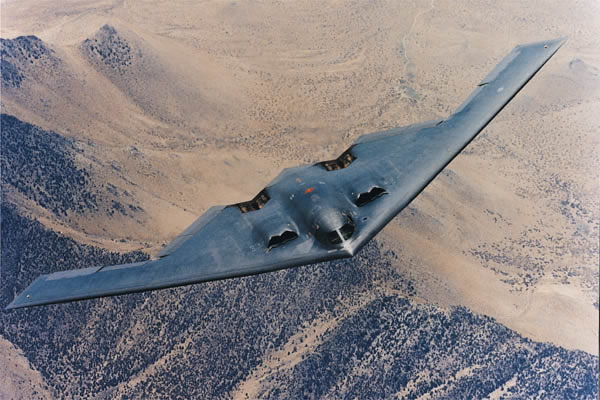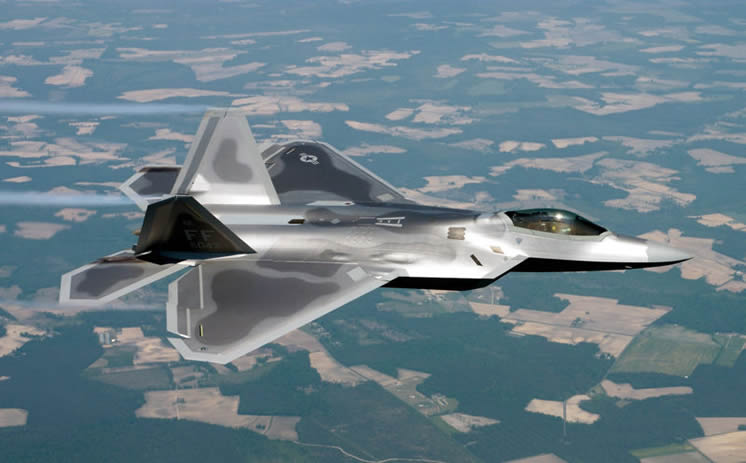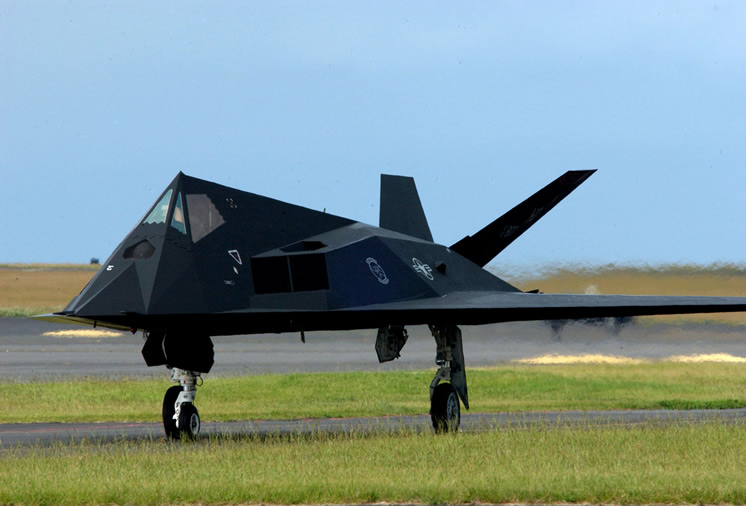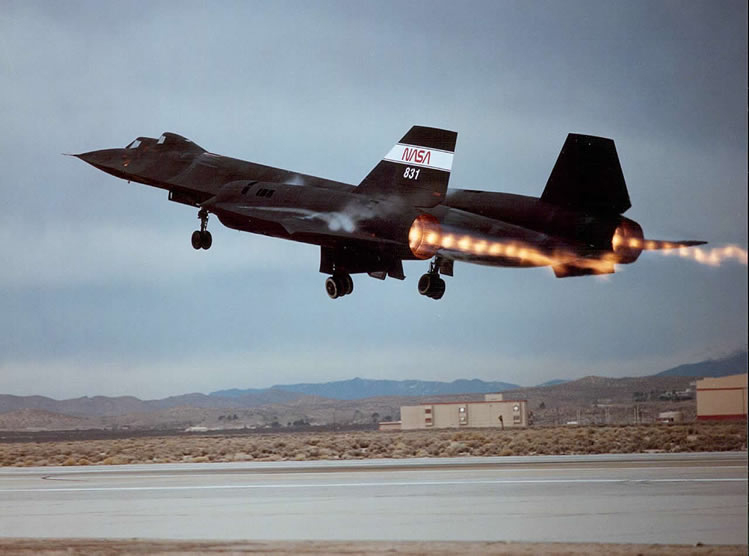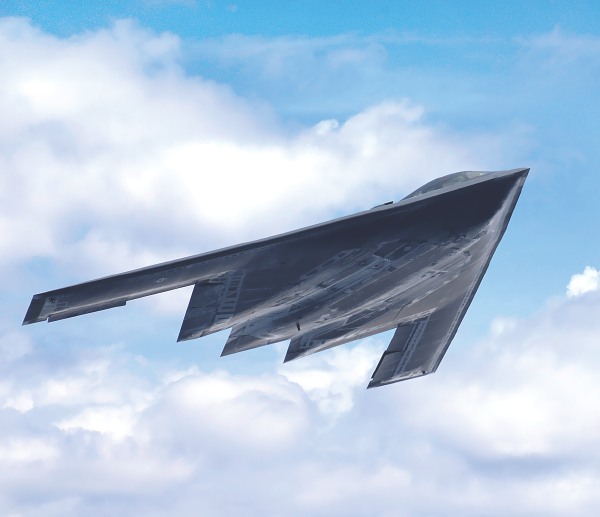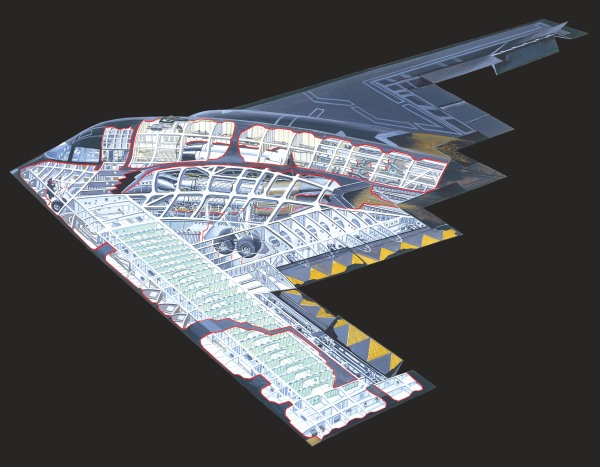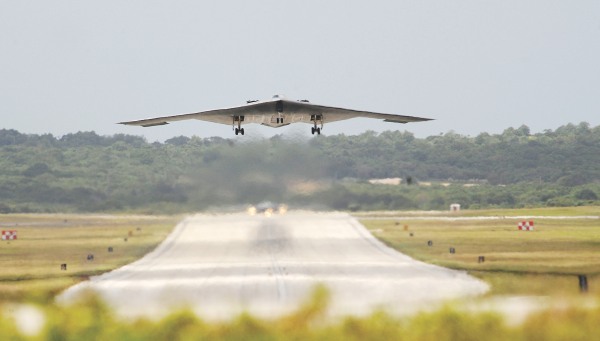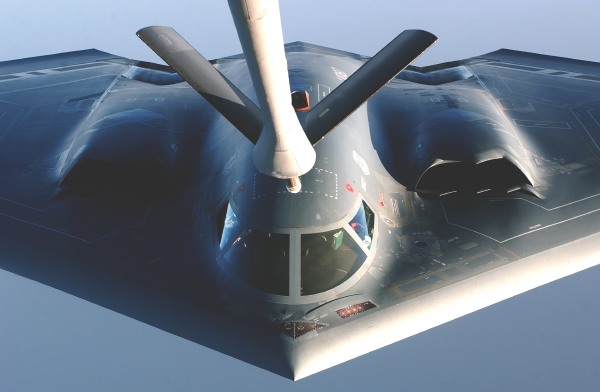1.0 Introduction
2.0 Capabilities
3.0 Technology
4.0 Radar software
5.0 Testing
1
1.0 Introduction
The F/A-22's avionics and software system is the most advanced ever integrated into an aircraft. It is the first aircraft to use integrated avionics, where the weapons management system, electronic warfare system and the AN/APG-77 radar work as one, giving the pilot unprecedented situation awareness.
A joint venture of Northrop Grumman's Electronic Sensors and Systems Division (ESSD) and Raytheon is developing the advanced AN/APG-77 active-element electronically scanned array radar for the F/A-22.
2.0 Capabilities
The AN/APG-77 radar is designed for air-superiority and strike operations and features a low observable, active aperture, electronically-scanned array with multi-target, all-weather capability.
The radar is key to the F/A-22's integrated avionics and sensor capabilities. It will provide pilots with detailed information about multiple threats before the adversary's radar ever detects the F/A-22. This is also called BVR, or Beyond Visual Range capability.
It will give an F/A-22 pilot the possibility in air-to-air combat, to track, target and shoot at multiple threat aircraft before the adversary's radar ever detects the F/A-22.
It will give an F/A-22 pilot the possibility in air-to-air combat, to track, target and shoot at multiple threat aircraft before the adversary's radar ever detects the F/A-22.
3.0 Technology
The F/A-22's AN/APG-77 radar is an active-element, electronically scanned (that is, it does not move) array of around 2000 finger-sized transmitter / receiver modules. Each module weights ca 15g and has a poweroutput of over 4W. The APG-77 is capable of changing the direction, power and shape of the radar beam very rapidly, so it can acquire target data, and in the meantime minimizing the chance that the radar signal is detected or tracked.
.

Most of the mechanical parts common to other radars have been eliminated, thus making the radar more reliable.This type of antenna, which is integrated both physically and electromagnetically with the airframe, provides the frequency agility, low radar cross-section, and wide bandwidth necessary to support the F/A-22's air dominance mission.
One requirement that drove all of the ATF designs was a wide field of regard for sensors, enabling the Raptor to acquire and track multiple targets beyond visual range. The requirement called for a 120-degree radar field of regard on each side of the nose.
A forward-looking infrared search and track capability was also desired. Lockheed approached the field-of-regard requirement for the radar with three radar arrays placed in the nose of the aircraft (one facing forward and two facing sideways). Each wing root carried an infrared search and track system that operated through faceted windows.
4.0 Radar Software
The avionics software is to be integrated in three blocks, each building on the capability of the previous block. Block 1 is primarily radar capability, but Block 1 does contain more than 50 percent of the avionics suite's full functionality source lines of code (SLOC) and provides end-to-end capability for the sensor-to-pilot data flow
This Block 1 software enables the basic operation of the radar and its initial mode complement, including the simultaneous operation of search and track modes and systems health and maintenance or built-in-test modes.
At the Boeing Avionics Integration Laboratory the F/A-22 radar was integrated with the avionics mission software and other aircraft avionics sensors such as the electronic warfare system, and the communications, navigation and information systems.
5.0 Testing
By the first quarter of 1998, the radar was delivered to The Boeing Company's F/A-22 Avionics Integration Laboratory in Seattle, Wash., where engineers integrated the radar with other F/A-22 avionics.
Meanwhile, flight testing of a second F/A-22 radar continued aboard a modified Boeing 757 testbed aircraft at ESSD. The test bed consistsed of an F/A-22 forward fuselage installed on the 757's forward pressure bulkhead. Electronic warfare (EW) and communication, navigation and identification (CNI) sensors were mounted directly on the sensor wing, which was designed to simulate the sensor positioning found on the F/A-22's wings.
.
The cabin had space for 30 software engineers and technicians who could evaluate avionics and identify anomalies, in real time. A simulated F/A-22 cockpit was installed in the cabin of the Flying Test Bed. It had all primary and secondary F/A-22 displays, as well as the throttle and stick.
The conducted flight tests successfully demonstrated the expected levels of performance of the F/A-22 radar, including basic search and track functions.
2.0 Capabilities
3.0 Technology
4.0 Radar software
5.0 Testing
1
1.0 Introduction
The F/A-22's avionics and software system is the most advanced ever integrated into an aircraft. It is the first aircraft to use integrated avionics, where the weapons management system, electronic warfare system and the AN/APG-77 radar work as one, giving the pilot unprecedented situation awareness.
A joint venture of Northrop Grumman's Electronic Sensors and Systems Division (ESSD) and Raytheon is developing the advanced AN/APG-77 active-element electronically scanned array radar for the F/A-22.
2.0 Capabilities
The AN/APG-77 radar is designed for air-superiority and strike operations and features a low observable, active aperture, electronically-scanned array with multi-target, all-weather capability.
The radar is key to the F/A-22's integrated avionics and sensor capabilities. It will provide pilots with detailed information about multiple threats before the adversary's radar ever detects the F/A-22. This is also called BVR, or Beyond Visual Range capability.
 |
It will give an F/A-22 pilot the possibility in air-to-air combat, to track, target and shoot at multiple threat aircraft before the adversary's radar ever detects the F/A-22.
It will give an F/A-22 pilot the possibility in air-to-air combat, to track, target and shoot at multiple threat aircraft before the adversary's radar ever detects the F/A-22.
3.0 Technology
The F/A-22's AN/APG-77 radar is an active-element, electronically scanned (that is, it does not move) array of around 2000 finger-sized transmitter / receiver modules. Each module weights ca 15g and has a poweroutput of over 4W. The APG-77 is capable of changing the direction, power and shape of the radar beam very rapidly, so it can acquire target data, and in the meantime minimizing the chance that the radar signal is detected or tracked.
.

Most of the mechanical parts common to other radars have been eliminated, thus making the radar more reliable.This type of antenna, which is integrated both physically and electromagnetically with the airframe, provides the frequency agility, low radar cross-section, and wide bandwidth necessary to support the F/A-22's air dominance mission.
One requirement that drove all of the ATF designs was a wide field of regard for sensors, enabling the Raptor to acquire and track multiple targets beyond visual range. The requirement called for a 120-degree radar field of regard on each side of the nose.
A forward-looking infrared search and track capability was also desired. Lockheed approached the field-of-regard requirement for the radar with three radar arrays placed in the nose of the aircraft (one facing forward and two facing sideways). Each wing root carried an infrared search and track system that operated through faceted windows.
4.0 Radar Software
The avionics software is to be integrated in three blocks, each building on the capability of the previous block. Block 1 is primarily radar capability, but Block 1 does contain more than 50 percent of the avionics suite's full functionality source lines of code (SLOC) and provides end-to-end capability for the sensor-to-pilot data flow
This Block 1 software enables the basic operation of the radar and its initial mode complement, including the simultaneous operation of search and track modes and systems health and maintenance or built-in-test modes.
At the Boeing Avionics Integration Laboratory the F/A-22 radar was integrated with the avionics mission software and other aircraft avionics sensors such as the electronic warfare system, and the communications, navigation and information systems.
5.0 Testing
By the first quarter of 1998, the radar was delivered to The Boeing Company's F/A-22 Avionics Integration Laboratory in Seattle, Wash., where engineers integrated the radar with other F/A-22 avionics.
Meanwhile, flight testing of a second F/A-22 radar continued aboard a modified Boeing 757 testbed aircraft at ESSD. The test bed consistsed of an F/A-22 forward fuselage installed on the 757's forward pressure bulkhead. Electronic warfare (EW) and communication, navigation and identification (CNI) sensors were mounted directly on the sensor wing, which was designed to simulate the sensor positioning found on the F/A-22's wings.
.
 |
The cabin had space for 30 software engineers and technicians who could evaluate avionics and identify anomalies, in real time. A simulated F/A-22 cockpit was installed in the cabin of the Flying Test Bed. It had all primary and secondary F/A-22 displays, as well as the throttle and stick.
The conducted flight tests successfully demonstrated the expected levels of performance of the F/A-22 radar, including basic search and track functions.







 Since computer- and software development has sky-rocketed over the past 20 years, prediction models can now be calculated quite precisely ,taking in account radar reflection versus the shape of the plane, while supporting more naturally aerodynamic shapes.
Since computer- and software development has sky-rocketed over the past 20 years, prediction models can now be calculated quite precisely ,taking in account radar reflection versus the shape of the plane, while supporting more naturally aerodynamic shapes.




